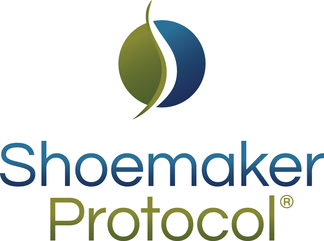10/22/2019 - Insomnia
Few problems are as common and as frustrating to patients and physicians alike as difficulty falling asleep and difficulty maintaining sleep. Early morning awakening is part of this syndrome but suggests the possibility of a different source.
For years, insomnia in CIRS patients have been blamed on deficiency of regulatory neuropeptides, especially MSH and VIP. Each of these proteins has significant impacts on circadian rhythms with deficiencies creating abnormalities in normal sleep/wake cycles. Replacement of VIP has corrected chronic insomnia in many, providing support for the idea that insomnia is not a psychological problem (anxiety or depression) but is a physiologic problem in which inflammation affects normal regulation of metabolic sources of hyperarousal.
The very number of different treatments employed to help patients with insomnia to get a good forty winks is a good indicator that no one has all the answers and no one therapy is likely to provide more than the 50% chance of benefit. The list of medications some patients have tried is astounding. Many meds are full of adverse side effects. Sedating drugs, from antidepressants to morphine; use of benzos and antihistamines; as well as some dangerous sleepers such as Ambien, are widely used. All of these drugs have potential side effects ranging from addiction to day-time grogginess and in the case of Ambien, frank psychosis and hallucinations that limit acceptable use.
Grandmothers of the world have talked for years about a glass of warm milk, calm evenings, early to bed, nothing going on in the bedroom (nothing) except for sleep. We all have heard that avoidance of stimulants helps. The 50% rule applies here, as all hyperarousal is endogenous.
Supplements are widely used to help sleep, with melatonin possibly leading the list. For the fortunate few (in my experience melatonin helps less than 10%) melatonin is a treasure.
Treatment of inflammation is mandatory. We know that in CIRS patients, ongoing exposure to actinomycetes is one of the most important elements associated with insomnia. It would not surprise me that actinos, with their incredibly diverse capability to manufacture compounds, are releasing something as yet unknown that disrupts adrenoceptors or modulators of mitochondrial metabolism that keep the hyper aroused state going.
Some of the exciting new molecular approaches to insomnia include manipulation of glycolysis, particularly enzymes with acronym names like GAPDH, show excellent propensity to deal with the over-stimulation with pyruvate that can be mimicked by over-correction of molecular
hypometabolism. This overshoot can be identified by use of GENIE, which will also show pertinent information related to actinomycetes.
Suffice to say, correction of an age-old problem remains sought after by millions of patients. Surely, someone can figure this out!
1. Kay-Stacey M, Attarian H. Advances in the management of chronic insomnia. BMJ 2016; 354: i2123.
2. Riemann D, Nissen C, Palagini L, Otte A, Perlis M, Spiegelhalder K. The neurobiology, investigation, and treatment of chronic insomnia. Lancet Neurol 2015; 14: 547-58.
3. Riemann D, Spiegelhalder K, Feige B, Voderholzer U, Berger M, Perlis M, Nissen C. The hyperarousal model of insomnia: a review of the concept and its evidence. Sleep Med Rev 2010; 14: 19-31
Featured Resources
Member Q&A January 2025
Member Q&A January 2025
Member Q&A December 15, 2024
Member Q&A December 15, 2024 Holidays, New Homes, and Air Purifiers
Member Q&A December 1, 20224
Member Q&A December 1, 2024 VIP, CSM, and more
Member Q&A November 16, 2024
Member Q&A inlcuing Pets, UV Light, and more
Week of October 14, 2024
Member Questions for the Second Half of October 2024





